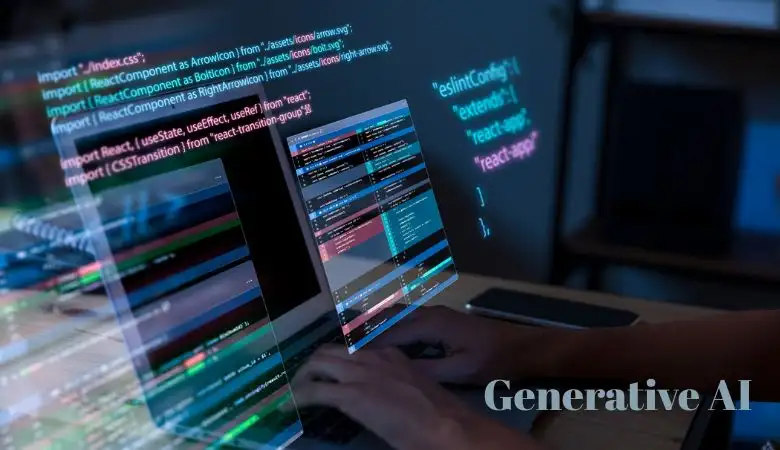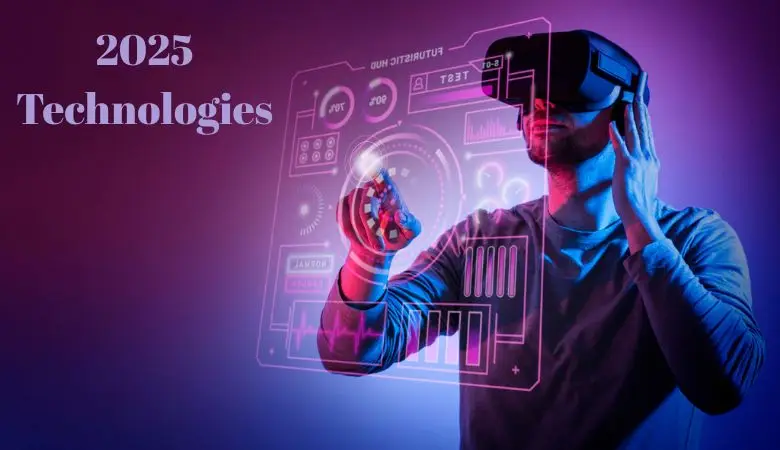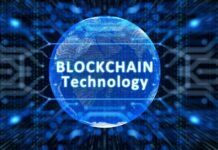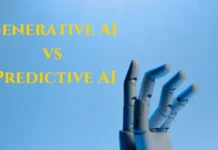We human beings don’t know who invented the Internet and technologies; however, we are still enjoying everything at our fingertips with a smartphone and laptop. Every year, we are seeing new technologies arriving; therefore, let’s see the Tech article – latest technology news & updates techarticle.com.in in this blog post.
Tech is more than just a smartphone, PC, laptop, or the internet. There are many things innovated in this world by human brains with their patience and learnings.
According to IBM the first workshop of AI which took place in the year 1956, is known as the official AI birthdate of the burgeoning field of AI. Tech article – latest technology news & updates techarticle.com.in presented detailed information about the latest technologies in 2025.
Tech article – Latest Technology News & Updates Techarticle.com.in
Here below are all the new technologies that are arising in 2025 and going to evolve all around the world.
1. Quantum Computing
Quantum computing represents a fundamental shift in computational power, using the principles of quantum mechanics to process information at unprecedented speeds. By 2025, quantum computers are expected to have advanced beyond experimental stages, with companies like IBM, Google, and startups like Rigetti making major improvements to quantum hardware and error correction.
In contrast to classical computers that use bits (0s and 1s), quantum systems, on the other hand, utilize qubits, which can exist in multiple states simultaneously thanks to superposition and entanglement. Consequently, this enables quantum computers to solve complex problems—such as drug discovery, material science simulations, and cryptographic challenges—that are, in fact, intractable for classical systems.
Moreover, in 2025, quantum computing is predicted to impact industries through hybrid quantum-classical systems, where quantum processors will replace traditional computing for particular tasks.
For instance, financial sectors are exploring quantum algorithms for risk analysis and portfolio optimization; meanwhile, cybersecurity faces both opportunities and threats, as quantum systems could potentially break current encryption standards like RSA. As a result, governments and corporations are investing heavily in post-quantum cryptography to safeguard data.
Nevertheless, challenges remain, including qubit stability and high operational expenses due to the requirement for ultra-low-temperature environments. Despite these hurdles, the potential of quantum computing to drastically change AI model training, climate modeling, and logistics optimization is, without a doubt, undeniable.
By 2025, we may see early commercial applications in niche sectors, with broader implementation expected in the following decade. Collaborations between academia, industry, and governments are accelerating progress, ensuring that quantum computing becomes a cornerstone of future innovation.
As accessibility improves through cloud-based quantum services, smaller enterprises may also begin experimenting with this transformative technology, democratizing access to what was once a highly exclusive field.
Why Quantum Computing Matters in 2025
- Solves problems classical computers can’t handle.
- Accelerates drug discovery, climate modeling, and cryptographic research.
- Enables hybrid quantum-classical systems for finance, logistics, and AI.
| Factor | Details |
|---|---|
| Key Players | IBM, Google, Rigetti, D-Wave |
| Core Technology | Qubits, Superposition, Entanglement |
| Industries Impacted | Healthcare, Finance, Cybersecurity, Logistics |
| Key Benefit | Exponentially faster complex problem solving |
| Main Challenge | Error correction & qubit stability |
2. Generative AI – (Tech Article – Latest Technology News & Updates Techarticle.com.in)
Generative AI, a component of artificial intelligence focused on creating content, has exploded in capability by 2025, building on the success of models like GPT-4 and DALL-E from prior years. This technology uses deep learning, particularly transformer architectures, to generate text, images, videos, music, and even 3D models with remarkable realism and creativity.
In 2025, generative AI is more integrated into daily life, powering tools for personalized content creation, marketing, education, and entertainment.

Businesses leverage generative AI for automated design of advertisements, synthetic media production, and customer service chatbots that mimic human nuance. In education, AI tools craft tailored learning materials, while in healthcare, they assist in generating synthetic data for research without privacy worries.
However, ethical challenges persist—deepfakes and misinformation campaigns have become more sophisticated, prompting urgent calls for regulation and detection mechanisms. By 2025, frameworks for responsible AI use are likely in place in many regions, balancing innovation with societal safety.
The technology’s accessibility has also increased, with open-source models and user-friendly platforms enabling even non-technical individuals to create professional-grade content. Multimodal generative AI, capable of combining text, audio, and visual outputs, is a key trend, enhancing applications like virtual assistants and immersive storytelling.
Yet, energy consumption is still a concern, as training these models requires significant computational resources. Advances in energy-efficient algorithms and hardware are mitigating this issue by aligning generative AI with sustainability goals. By 2025, generative AI will continue to blur the boundaries between human and machine creativity, reshaping industries and challenging us to address its societal consequences with foresight and responsibility. Its integration into collaborative tools also fosters human-AI partnerships, amplifying productivity across creative and analytical domains.
Key 2025 Trends – Tech Article – Latest Technology News & Updates Techarticle.com.in
- Multimodal AI – combining text, audio, and visuals.
- AI-assisted education & healthcare data generation.
- Increasing open-source model accessibility.
| Factor | Details |
|---|---|
| Examples | ChatGPT-5, DALL-E, Midjourney |
| Applications | Marketing, Education, Entertainment, Healthcare |
| Key Advantage | Automated, scalable content creation |
| Main Risks | Deepfakes, Bias, Energy Costs |
3. Internet of Things (IoT)
The Internet of Things (IoT) in 2025 is a sprawling network of interconnected devices, from smart home appliances to industrial sensors, driving efficiency and connectivity across sectors. With the global rollout of 5G and emerging 6G technologies, IoT ecosystems have become faster and more reliable, supporting billions of devices that communicate in real-time. Smart cities serve as a prime example of IoT applications, utilizing connected cameras and sensors for traffic management, energy optimization, and public safety.
In healthcare, IoT devices like wearable monitors track vital signs, enabling remote patient care and predictive diagnostics. Manufacturing benefits from IoT through predictive maintenance, where sensors detect equipment failures before they occur, minimizing downtime.
However, security stays a critical concern—each connected device is a potential entry point for cyberattacks. By 2025, enhanced encryption and AI-driven threat detection will be common in IoT deployments; however, vulnerabilities will still exist due to inconsistent standards across devices.
Consumer IoT has also grown, with homes featuring integrated ecosystems where appliances, lighting, and security systems sync seamlessly via voice assistants. Privacy issues loom large, as data from these devices often feeds into corporate databases, raising questions about authorization and surveillance.
Regulatory bodies are stepping in with tougher data protection laws by 2025 to address these concerns. Additionally, IoT’s role in sustainability is growing—smart grids optimize energy usage, and agricultural IoT solutions monitor soil and weather for precision farming, reducing waste. The integration of IoT with AI and edge computing further enhances its potential by processing data locally, reducing latency. As IoT continues to permeate daily life in 2025, maintaining a balance between innovation, security, and ethical considerations is crucial for its sustained growth and public trust.
Techarticle.com.in about the “IoT Uses”
- Smart city traffic and energy optimization.
- Remote healthcare monitoring.
- Predictive maintenance in manufacturing.
| Factor | Details |
|---|---|
| Tech Backbone | 5G/6G, Edge Computing, AI |
| Applications | Smart Cities, Healthcare, Agriculture |
| Key Players | Cisco, Siemens, AWS IoT, Huawei |
| Risks | Cybersecurity threats, Data Privacy |
4. Autonomous Vehicles
Autonomous vehicles (AVs) have reached new milestones by 2025, transitioning from pilot projects to broader commercial deployment in urban and suburban environments. Companies such as Tesla, Waymo, and Cruise are spearheading this trend, as they are increasingly implementing Level 4 autonomy, which allows vehicles to operate without human assistance in specific conditions. AVs rely on a fusion of sensors (LiDAR, cameras, and radar), AI algorithms, and high-definition mapping to navigate complex environments, significantly reducing human error, which accounts for most road accidents.
Techarticle.com.in shares that in 2025, ride-sharing services dominate AV adoption, offering cost-effective, driverless taxis in major cities, while logistics companies use autonomous trucks for last-mile delivery, cutting costs and emissions. Public transportation also benefits, with self-driving buses operating on fixed routes.
However, challenges like regulatory hurdles, public skepticism, and ethical dilemmas (e.g., decision-making in unavoidable accidents) persist. Governments worldwide are crafting frameworks to ensure safety and liability standards, with some regions mandating human oversight for higher autonomy levels.
Technological advancements in 2025 consist of improved machine learning for unpredictable scenarios (pedestrians, weather) and vehicle-to-everything (V2X) communication, enabling AVs to interact with infrastructure and other vehicles for smoother traffic flow.
However, the potential for catastrophic damage from hacked vehicles heightens cybersecurity risks. Robust defense mechanisms are thus a priority. AVs also contribute to sustainability by optimizing routes and integrating with electric vehicle platforms, reducing carbon footprints.
While full Level 5 autonomy (no human intervention in any condition) remains elusive, 2025 marks a pivotal year for AV integration into daily life, reshaping urban planning and mobility. Continued investment and public-private partnerships are vital to address remaining technical and societal barriers, paving the way for a driverless future.
Applications
- Driverless taxis in urban areas.
- Autonomous trucks for logistics.
- Self-driving public buses.
| Factor | Details |
|---|---|
| Autonomy Level | Level 4 (High Automation) |
| Key Players | Tesla, Waymo, Cruise, Baidu Apollo |
| Industries Impacted | Transportation, Logistics |
| Key Benefit | Reduced accidents, lower transport costs |
| Main Risks | Cybersecurity, Ethical Decision-making |
5. Edge Computing
Edge computing has been identified as a critical technology by 2025, addressing the limitations of centralized cloud systems by processing data closer to its source. Unlike traditional cloud computing, which relies on distant data centers, edge computing uses localized servers or devices to handle data, reducing latency and bandwidth usage. This is especially important for real-time applications such as autonomous vehicles, industrial automation, and IoT ecosystems, where instantaneous decisions are crucial.
In 2025, edge computing supports smart cities by permitting instant analysis of traffic and surveillance data without round-tripping to the cloud. Healthcare also benefits, as edge devices process patient data on-site, leading to faster diagnostics in remote areas.
The technology also enhances privacy—sensitive data can be processed locally, minimizing exposure during transmission. Telecom giants are integrating edge computing with 5G networks, creating ultra-low-latency environments for gaming, AR/VR, and remote work tools.
However, challenges include managing distributed infrastructure and ensuring security across numerous edge nodes, which are more vulnerable to physical tampering.
By 2025, AI-driven security protocols and standardized frameworks will be helping reduce these risks. Energy efficiency is another focus, as edge devices often operate in resource-constrained settings; innovations in low-power hardware are addressing this.
Businesses are adopting edge computing to cut cloud costs and improve resilience—local processing ensures operations continue during network outages. Retailers, for instance, use edge analytics for in-store customer behavior tracking, personalizing experiences quickly.
As data volumes increase with IoT proliferation, edge computing in 2025 is a linchpin for adaptable, responsive systems. Its synergy with AI allows for smarter, decentralized decision-making, transforming industries from manufacturing to entertainment. The push for sustainable, localized computing solutions ensures edge technology will remain a cornerstone of digital infrastructure in the years ahead.
Edge Computing Advantages
- Edge computing enables faster decision-making for real-time systems.
- Enhanced privacy via local processing.
- Cost savings on cloud bandwidth.
| Factor | Details |
|---|---|
| Core Concept | Localized data processing |
| Applications | Smart Cities, Healthcare, Retail |
| Key Players | AWS, Microsoft Azure, Google Cloud |
| Risks | Security vulnerabilities, Maintenance complexity |
6. Extended Reality (XR)
Extended Reality (XR), which includes Virtual Reality (VR), Augmented Reality (AR), and Mixed Reality (MR), has evolved by 2025 into a transformative technology reshaping entertainment, work, and education. XR hardware, such as lightweight headsets from Meta, Apple, and Sony, has become more affordable and comfortable, boasting higher resolution displays and longer battery life. 5G connectivity further enhances XR by enabling seamless, high-fidelity experiences with minimal latency.
In 2025, XR is mainstream in gaming and social platforms, with virtual worlds like the metaverse offering immersive spaces for interaction, commerce, and creativity. Businesses leverage AR for remote collaboration—engineers visualize machinery overlays during repairs, while retailers offer virtual try-ons for clothes or furniture.
Education sees XR as a game-changer; students learn about historical events or execute virtual science experiments, enhancing engagement and recall. Healthcare uses XR for surgical training and therapy, simulating complex procedures or treating phobias in controlled environments.
However, challenges like motion sickness, data privacy, and the digital divide persist. By 2025, improved ergonomics and adaptive software reduce physical discomfort, while stricter data laws address privacy issues.
Accessibility remains an issue, though declining costs are broadening adoption. XR’s societal impact includes potential over-reliance on virtual environments, prompting discussions on mental health and real-world disconnection. Innovations in haptic feedback and brain-computer interfaces are pushing XR toward deeper immersion, blurring reality and simulation.
Sustainability is also a focus—energy-intensive XR systems are being optimized for lower consumption. As XR integrates with AI for personalized experiences, 2025 marks a tipping point where virtual and physical realities converge, redefining human interaction. Industries are investing heavily, recognizing XR’s ability to completely redefine training, design, and customer engagement, ensuring its role as a fundamental technology for the future.
Applications
- Virtual classrooms & training.
- AR retail try-ons.
- VR therapy & surgery simulation
| Factor | Details |
|---|---|
| Components | VR, AR, MR |
| Industries Impacted | Gaming, Education, Healthcare, Retail |
| Key Players | Meta, Apple, Sony, Microsoft |
| Risks | Over-reliance, Data Privacy |
7. Agentic AI
Agentic AI, a cutting-edge evolution of artificial intelligence by 2025, relates to systems capable of autonomous decision-making and goal-oriented behavior with minimal human oversight. Unlike traditional AI, which follows set rules or requires constant input, agentic AI can adapt, plan, and execute complicated tasks independently, mimicking human-like agency. This technology builds on advancements in reinforcement learning, natural language processing, and multi-agent systems.
In 2025, agentic AI is transforming industries by acting as virtual employees. In business, these systems manage supply chains, optimize logistics, and negotiate contracts by learning from data and stakeholder interactions. Healthcare sees agentic AI triaging patients, coordinating care, and even assisting in research by hypothesizing and testing medical theories. Personal assistants powered by agentic AI go beyond scheduling—they predict needs, manage finances, and create personalized experiences with uncanny precision.
The autonomy of agentic AI raises ethical concerns about accountability and bias. By 2025, regulatory bodies are likely enforcing transparency in AI decision-making processes to prevent unintended harm.
Security risks also loom—malicious entities could exploit autonomous systems for fraud or disruption. Robust safeguards and “kill switches” are standard in deployments to mitigate such threats. Technologically, agentic AI integrates with IoT and edge computing for real-time adaptability, enhancing its effectiveness in dynamic environments like smart cities or disaster response.
Energy efficiency remains a challenge, as complex decision-making demands significant computational power. Innovations in neuromorphic computing are helping address this. As agentic AI reshapes workflows in 2025, it challenges traditional notions of labor and responsibility, necessitating a cultural shift in how we interact with technology. Its potential to amplify human capability is immense, provided governance keeps pace with innovation.
Applications
- Supply chain optimization.
- Autonomous research in healthcare.
- Personalized virtual assistants.
| Factor | Details |
|---|---|
| Core Strength | Autonomous decision-making |
| Industries Impacted | Logistics, Healthcare, Business Operations |
| Risks | Security threats, Ethical accountability |
8. Advanced Robotics
Advanced robotics in 2025 is redefining industries and daily life through sophisticated machines that combine AI, machine learning, and cutting-edge hardware for unprecedented autonomy and precision. Unlike earlier robots limited to repetitive tasks, today’s systems adapt to dynamic environments, learning from interactions.
Companies like Boston Dynamics and Fanuc lead with robots that mimic human dexterity and decision-making, driven by enhanced sensors, computer vision, and tactile feedback.
Manufacturing benefits greatly, with collaborative robots (cobots) working alongside humans for assembly, quality control, and logistics, boosting productivity while ensuring safety through real-time hazard detection.
Healthcare robotics excels in 2025—surgical robots carry out complex procedures with minimal invasiveness, while exoskeletons aid rehabilitation and mobility for the people who are with disability. Service industries deploy robots for tasks like cleaning, delivery, and customer interaction in hotels and retail, reducing labor costs amid workforce shortages.
In agriculture, robotic harvesters and drones optimize crop yields with accuracy while addressing food security challenges. Disaster response sees robots navigating hazardous terrain for search and rescue, equipped with thermal imaging and communication relays. However, ethical concerns arise—job displacement fears fuel debates on reskilling workforces, while autonomous military robots raise questions of accountability in conflict. By 2025, international guidelines aim to regulate robotic autonomy in sensitive applications.
Technological hurdles include battery life and the complexity of programming for unstructured environments, though AI advancements are closing these gaps. Social robots also emerge, offering companionship for the older people, though privacy issues with data collection persist. Advanced robotics in 2025 reshapes economies and societies, blending human and machine capabilities.
Balancing innovation with ethical oversight ensures robotics enhances life without undermining human agency or security, setting a foundation for harmonious integration.
Applications
- Collaborative robots in manufacturing.
- Surgical robots in healthcare.
- Agricultural drones for precision farming.
| Factor | Details |
|---|---|
| Core Goal | Eco-conscious innovation |
| Industries Impacted | Energy, Manufacturing, Agriculture |
| Key Players | Tesla, Siemens, BYD, NextEra Energy |
| Risks | E-waste, Cost Barriers |
Conclusion
The year 2025 marks a turning point in the technology landscape. From quantum computing breakthroughs to advanced robotics, innovations are reshaping industries, economies, and everyday life. In this article of “Tech article – latest technology news & updates techarticle.com.in”, we explore the top technological trends of 2025, their real-world applications, challenges, and opportunities.
FAQ
The most significant risks of IoT technology include cybersecurity vulnerabilities, data privacy concerns, and lack of device standardization. Each connected device can act as an entry point for hackers, potentially exposing sensitive personal or business information.
Generative AI in 2025 is more regulated than ever , with frameworks for responsible AI use in many countries. While it’s safe for most applications—like marketing content, education, and design—there are still risks, including deepfakes, misinformation, and biased outputs.
Autonomous vehicles are not ready to replace all human drivers. Most operate at Level 4 autonomy, meaning they can drive themselves in specific conditions but still require human oversight in complex or unpredictable situations.
Quantum computing will affect everyday life by enabling faster drug development, more accurate weather forecasting, better financial modeling, and secure data encryption.






